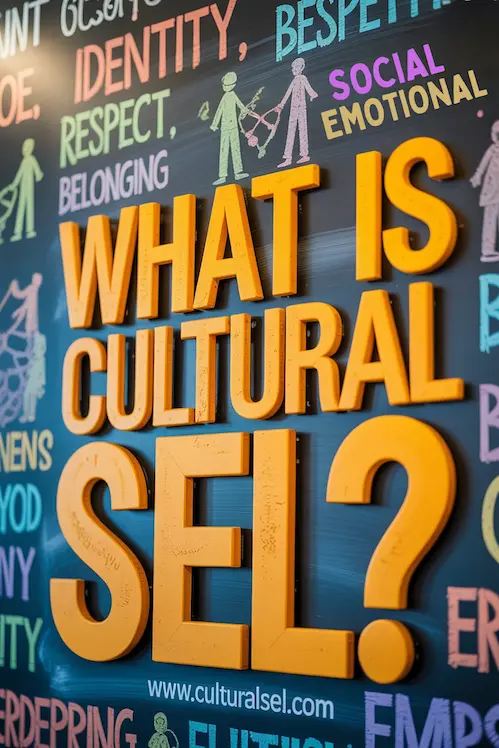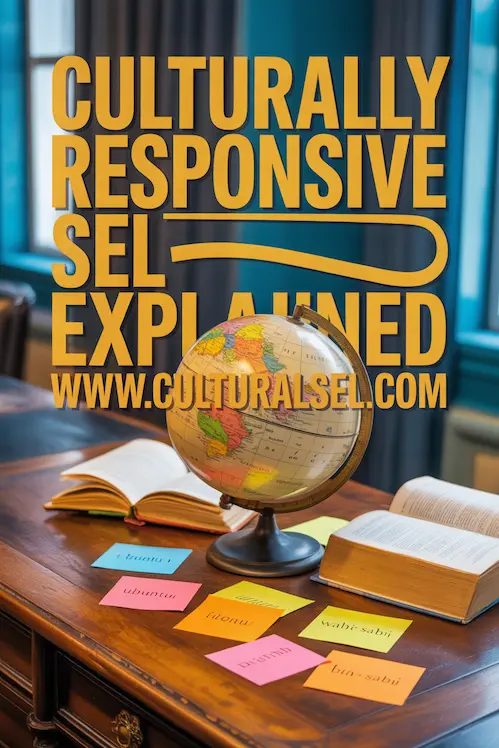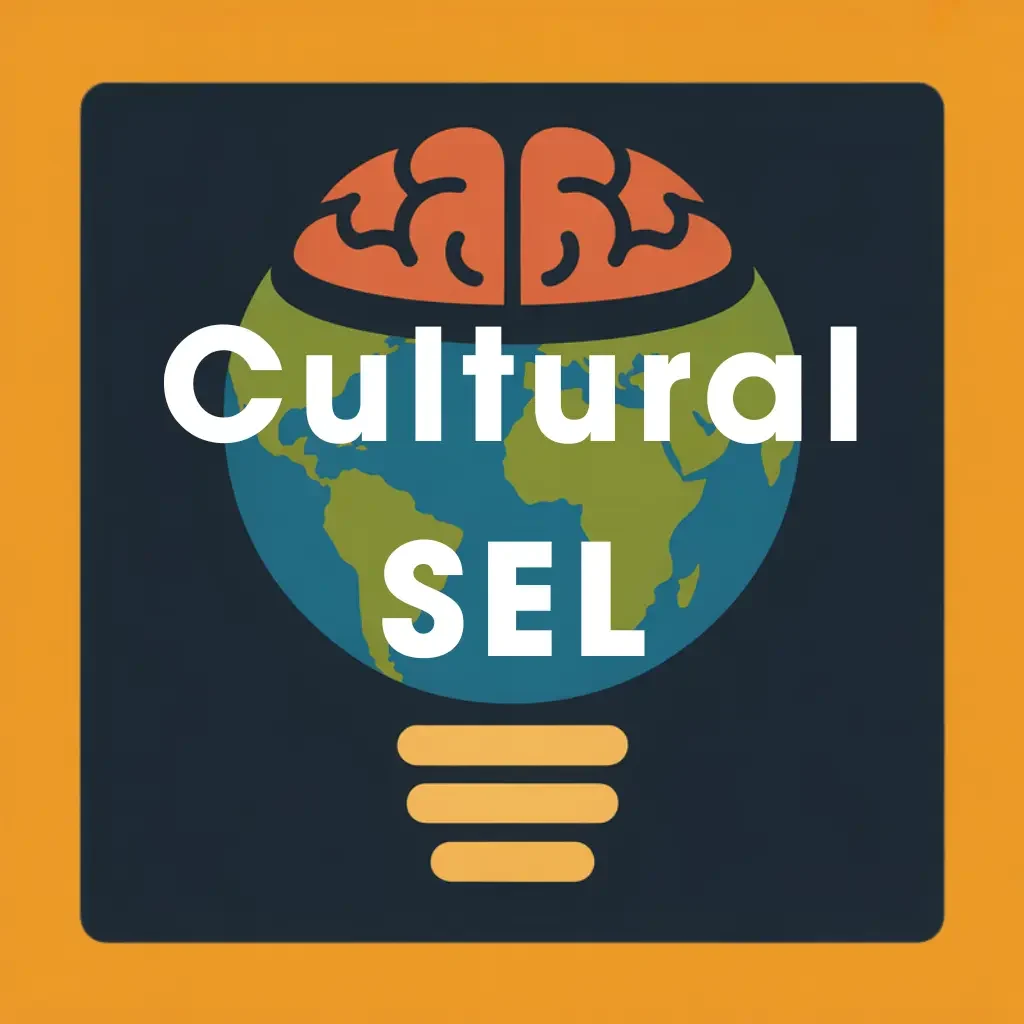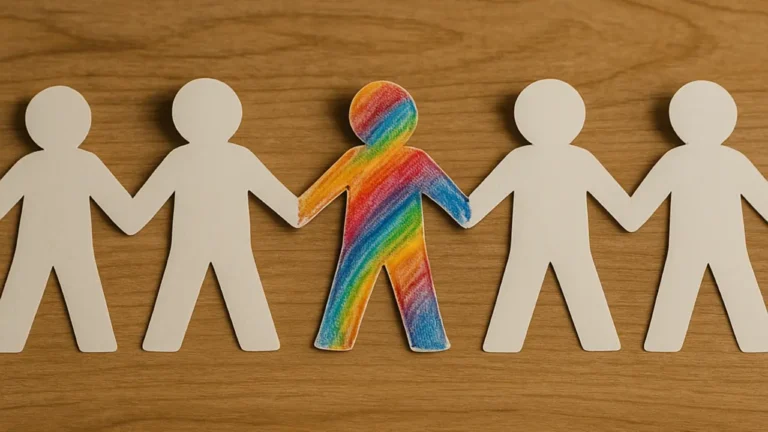Cultural SEL: A Practical Parent & Teacher Guide to Inclusive SEL Success

THIS POST MAY CONTAIN AFFILIATE LINKS. THIS MEANS WE MAY RECEIVE A COMMISSION FROM QUALIFYING PURCHASES YOU MAKE THROUGH OUR LINKS. KINDLY READ OUR DISCLOSURE NOTICE FOR MORE INFORMATION.
Picture a classroom or a family dinner table, full of unique stories, backgrounds, and ways of seeing the world.
Every child brings their own culture, values, and traditions, shaping how they feel, act, and connect with others.
When social emotional learning (SEL) programs don’t reflect these differences, even the best intentions can fall flat or leave kids feeling unseen.
Cultural SEL is about making sure social emotional learning honors students’ identities, builds trust, and helps all kids and adults truly feel they belong.
In this post, you’ll find out what Cultural SEL really means, why it matters for every community, and how parents, teachers, and leaders can get started without any guesswork.
The goal is simple: help every learner feel empowered, understood, and connected.
Thank You for Reading!
What Is Cultural SEL? The Basics Explained
If you’ve heard about social emotional learning but wondered how it works for real classrooms filled with many cultures, you’re not the only one.
As parents and teachers we want to help kids grow and feel supported, but it’s easy to worry that one-size-fits-all programs might miss the mark.
Cultural SEL steps in to make social emotional growth a true fit for every child, no matter their background.
So what actually counts as Cultural SEL, and why should it matter to you? Here’s what you need to know.
What Does Cultural SEL Mean?
Culturally responsive social emotional learning blends the basics of social emotional learning, such as understanding feelings, managing emotions, and building relationships, with thoughtful attention to each child’s cultural identity.
This means recognizing that every student brings their own stories, customs, and beliefs into the learning space.
Cultural SEL strives to honor these differences so every learner feels truly seen and supported.
Cultural SEL moves past just teaching empathy or respect. It brings lessons, activities, and routines closer to the real lives and experiences of the kids in the room.
When SEL values culture, children feel empowered to show up as themselves and learn new skills that fit their world.
The Key Ingredients of Cultural SEL
Cultural SEL isn’t just “regular SEL with a twist.” It’s a richer, more connected approach. Let’s break down the main pieces:
- Self-Awareness: Kids learn to name and value their feelings, strengths, and cultural heritage.
- Self-Management: They practice managing emotions and working toward goals that match their family values.
- Social Awareness: Children notice and appreciate the differences and similarities among their peers’ backgrounds.
- Relationship Skills: They build strong, healthy friendships and solve problems across cultures.
- Responsible Decision-Making: Kids make choices that show respect for fairness and cultural diversity.
Here’s what that can look like in action:
| SEL Skill | Cultural Connection Example |
|---|---|
| Self-Awareness | Sharing family traditions in class |
| Social Awareness | Reading stories from different cultures |
| Relationship Skills | Problem-solving games that discuss fairness |
| Responsible Decision-Making | Reflecting on conflicts from different viewpoints |
Why Cultural SEL Matters
When SEL includes culture, you get more than just classrooms where kids feel seen and heard. Children and families become more motivated, engaged, and connected.
They speak up, try new things, and support one another. Teachers and parents also gain a better understanding of their students, making every lesson and conversation feel more relevant.
Kids don’t leave their culture at the door. When SEL welcomes every story and background, learning becomes a bridge that brings kids together instead of pushing them apart.
What’s Different About Cultural SEL?
Plenty of SEL programs talk about empathy and respect, but Cultural SEL goes further. It asks adults to:
- Learn about students’ cultures and everyday experiences.
- Discuss real topics, like bias, identity, and inclusion.
- Choose books, videos, and activities that reflect the children in the room.
- Give kids chances to share about their lives and cultures.
Cultural SEL is an approach that goes beyond a single lesson. It helps every child feel like they belong and gives adults the tools to support them, no matter where they come from or what they believe.
Why Is Cultural SEL Important for Kids, Families, and Schools?
Kids, families, and schools all thrive when everyone feels seen, respected, and included.
Cultural SEL lays the groundwork for building real trust, meaningful connections, and stronger learning not just for a few students, but for everyone.
When SEL honors who children are and where they come from, everyone gains. Here’s how Cultural SEL brings out the best in kids, helps families stay connected, and supports schools in building caring communities.
Benefits for Kids
Children grow up in a world where identity really matters. Cultural SEL gives them the safety and confidence to be themselves. When SEL ties into their unique backgrounds, kids:
- Feel proud of their culture and identity.
- Understand and manage their emotions even when things feel unfamiliar.
- Grow empathy for classmates from different backgrounds.
- Build strong friendships and learn to work together.
- Do better in school because they feel like they belong.
Kids who learn these skills early are better equipped to handle challenges. They develop self-awareness, learn to resolve disagreements, and build habits that set the stage for academic and personal success.
Benefits for Families
Families want their children’s values, stories, and traditions honored at school. With Cultural SEL:
- Family voices and experiences are welcomed into the classroom.
- Parents feel more connected to their child’s education.
- Home life and school life start to fit together more naturally.
- Trust grows between families and educators.
Cultural SEL encourages open conversations about emotions, respect, and differences at home. This helps kids carry valuable social and emotional skills from school into their family life and community.
Benefits for Schools
Schools that center Cultural SEL create spaces where belonging is the norm. This makes every part of school life, lessons, friendships, even discipline, more effective and fair.
Cultural SEL helps schools:
- Build a positive, inclusive school climate for all.
- Boost student engagement, attendance, and motivation.
- Reduce isolation, bullying, and misunderstandings.
- Empower teachers to connect with every student.
An environment shaped by Cultural SEL gives all students a reason to show up, participate, and support each other. Teachers feel more confident when they can bring out the strengths in every child.
How Cultural SEL Connects Everyone
Strong learning communities are built when kids, families, and schools work as partners.
Cultural SEL connects these three groups by honoring diversity and making sure every voice is heard. When SEL includes culture:
- Students become better problem-solvers and decision-makers.
- Families trust that their children are valued.
- Schools build habits of fairness and respect.
This approach opens the doors for more honest conversations, increased understanding, and real teamwork across all groups.
That’s what turns a classroom, or even an entire school, into a true community where everyone can thrive.
How Teachers and Parents Can Practice Cultural SEL Every Day
Embracing culturally responsive social emotional learning (Cultural SEL) is not a complicated process.
Every teacher and parent can practice it in daily life, even when they feel unsure.
Taking small but consistent steps to include each student’s culture helps kids build confidence and belonging.
If you’ve ever wondered whether you need special skills or what to do if you make a mistake, I am right there with you. Here are answers to many questions parents and teachers often ask, so you can move forward with confidence.
Common Questions about Cultural SEL
Below you’ll find answers to some of the questions us parents and educators ask most. These responses provide practical, honest guidance and reassurance for anyone wanting to grow their skills in Cultural SEL.
Q: Is Cultural SEL the same as regular SEL?
A: No, they’re not the same. Regular social emotional learning teaches universal skills like self-awareness, handling feelings, and getting along with others. Culturally responsive SEL takes this a step further. It connects those skills with a respect for each child’s cultural background and lived experiences. This means lessons, stories, and activities get woven into what matters most to students and their families.
Q: Do I need special training to practice Cultural SEL?
A: You don’t need to be an expert. Some training can help, but what’s even more important is a willingness to learn and listen. Focus on understanding the cultures represented in your class or home. Know that being open, reflective, and ready to adapt will carry you far. Ask questions and encourage students or your own children to share what’s important to them.
Q: What if I make a mistake about someone’s culture?
A: It’ll happen sometimes, and that’s okay. If you make a mistake, acknowledge it, apologize, and show you’re ready to learn. Kids and families respond well when adults show respect for their feelings and experiences. Remember, modeling humility and openness could give kids the courage to do the same.
Quick Reference Table
Here’s a snapshot for easy understanding:
| Question | Quick Takeaway |
|---|---|
| Is Cultural SEL the same as regular SEL? | No, it adds culture and identity to regular SEL. |
| Do I need special training? | Training helps, but willingness matters more. |
| What if I make a mistake? | Acknowledge, apologize, and keep learning. |
Practicing Cultural SEL isn’t about getting it perfect. It’s about creating honest, safe spaces where every child feels seen and heard.
Every step you take, big or small, helps build the trust students need to reach their potential.
“Kids don’t leave their culture at the door. When schools and families welcome it in, real growth begins.”
Cultural SEL helps every child feel included, celebrated, and supported right where they are. By connecting social emotional learning with students’ cultures, both families and schools get stronger bonds, safer spaces, and empowered learners ready to succeed.
Change starts with small steps. Try one new Cultural SEL practice this week in your class or at home.
Your commitment can help build a welcoming community for every child.
Sign up for updates, or share your stories and ideas below. Together, we can grow a network of caring adults who help kids feel seen, heard, and inspired.
Thank you for making a difference.
IF THIS POST RESONATES WITH YOU, EXPLORE MORE OF CULTURAL SEL ON OUR SITE.
You’ll find free guides, practical tools, and reflections to help families, educators, and communities bring culture, identity, and connection into social-emotional learning.
💬 Want to keep the conversation going? Join our Facebook community and connect with others exploring Cultural SEL.
📌 Save or share this post so other families and educators can bring these ideas into their own homes, classrooms, and communities.
Together, we can keep growing, connecting, and raising empowered learners.





